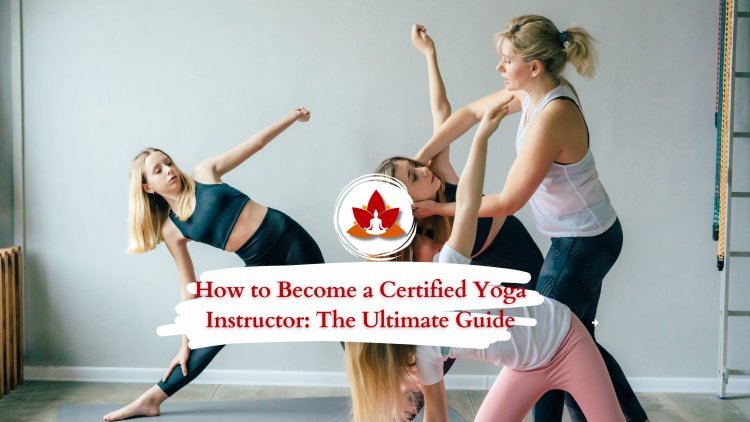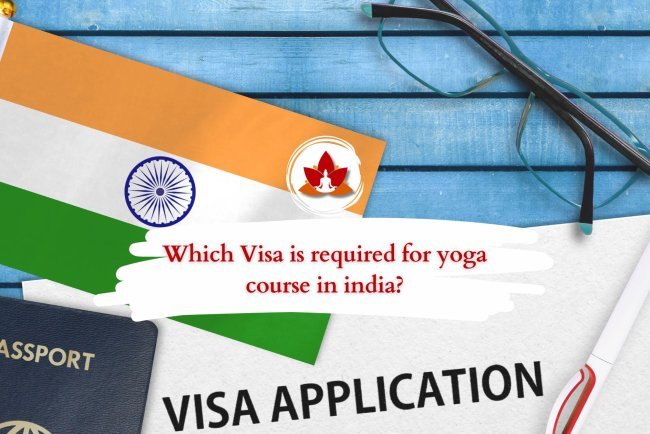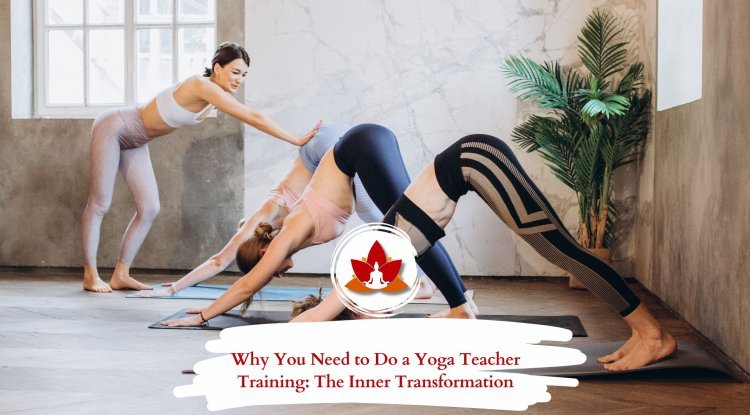How to Become a Certified Yoga Instructor: The Ultimate Guide

Does the idea of becoming a certified yoga instructor entice you much? Do you feel inclined towards spreading the transforming gift of yoga to the world? Be it in your journey for self-advancement or changing your career line, below is detailed information on certification in yoga, becoming a yoga instructor, as well as different courses for yoga teacher training.
Understanding Yoga Teacher Certification : Checking The Facts
A yoga teacher certification ensures the fact that instructors possess the necessary know-how as well as required skills to take classes in a safe and effective manner. Yoga trainer certification programs incorporate the major subjects based on Anatomy, Physiology, Methods of Teachings, and Yoga Philosophy as part of their syllabus.
How To Become A Certified Yoga Instructor : Types Of Certification
There are various yoga certifications; a certified yoga instructor course includes the general certification of teaching yoga, prenatal yoga, children's yoga, and therapeutic yoga. The widest recognition is given by Yoga Alliance, where it grants, or bestows RYT, or Registered Yoga Teacher.
Selecting The Right Program Of Yoga Certification
While selecting your yoga program, it is important to consider the program's accreditation, how its curriculum is designed, who its faculty is, how much it costs, how long it is, and any other relevant details as you zero in on your final choice. Look for programs that align most closely with what you are really looking for.
Accreditation
Make sure that your chosen course program is accredited, and there is authentic recognition from organizations, such as the Yoga Alliance. Look for credits in terms of assuring that the program is provided with defined quality and comprehensiveness.
Cost and time
The cost and length of yoga certification programs vary. The intensity of the programs ranges widely, with some lasting only a number of weeks compared to others taking months. Though it follows that in pursuing a programme you also incorporate a budget plan in mind.
Top Rated Yoga Certification Programs
The Yoga Alliance is a highly recognized international body in charge of granting a yoga teacher certification to the respective yoga schools. Their certification, RYT, is recognized around the world—more than that actually; it ensures you meet some basic educational standards that qualify you as an authentic yoga teacher.
Specialized Certifications
The other advanced certifications that you can opt for as per your interests include areas such as prenatal yoga or yoga therapy. Within this domain, students can always do various other certifications and accreditations related to specific niches. So check if these are available under the yoga certification program.
Most Prestigious Yoga Teacher Certification Programs : What To Check
Elite top yoga instructor certification schools have experienced instructors who are well-connected with the industry. To learn about a certain program, good reviews and certified employment rates post-certification are helpful for finding the best certification program.In this regard , you can check the respective yoga school’s :
Reviews and Comments
Searching the reviews from former students can say much on the quality and reputation of the certification course. Check for courses that have a high rating consistently and has relatively positive comments.
Comparing with other programs
You can make the right judgment by comparing different programs in the curriculum, cost, length, and accreditation. Therefore, make a list of potential programs, scrutinize them on the set criteria, and judge them after that kind of scrutiny.
How To Become A Yoga Teacher
A detailed yoga teaching training to become a yoga instructor entails education in the discipline of anatomy, physiology, teaching methodologies, and even the philosophy of yoga. Here, the subject is also split into theoretical and practical aspects, while providing hands-on experience during training . Furthermore, the course program must entail the following:
Curriculum
A typical curriculum within the program must include practice of asanas, principles of alignment, anatomy, physiology, pranayama (breathing techniques), meditation, study of yoga philosophy, and ethics.
Training Hours
Most yoga teacher certification courses require at least 200 hours of training, usually the minimum required by Yoga Alliance in its basic certification. There are courses on both 300 hour yoga teacher training and 500 hour yoga teacher training formats on completing advanced training.
Best Online Yoga Teacher Training
Enrolling for the best online yoga teacher training certification class is a smart alternative for those limited by time constraints or other commitments in life. If you are one of them, then you can simply opt in for this particular course that will enable you to still become a qualified professional yoga teacher while eliminating the distance barrier.
Benefits Of Online Yoga Teacher Training
The beneficial features of online yoga teacher training include:
-
Flexibility: Online Yoga teacher training online is very flexible; it offers the learner the chance to go at their own pace.
-
Accessibility: Besides, an online yoga teacher training as compared to in-person training, is softer on the pocket and easily accessible.
Best Online Yoga Courses
Some of the best online yoga courses are found to be conducted by YogaWorks, My Vinyasa Practice, and Uplifted Yoga. These modules are accredited, comprehensive, and well-reviewed by former students.
How To Determine The Best Online Yoga Course
You would probably need to check the particular features of the curriculum and whether the online program is for sure an accredited one. Look for programs having interactive elements such as live classes, as well as strong community support, in order to offer a good learning platform.
In-Class Or Online Yoga Teacher Training?
If you are considering whether to opt for in-class or online yoga teacher training , you may take note of their:
Advantages and Disadvantages
Live classes let you gain face-to-face exposure to instructors and peers, effective hands-on adjustments, and on-the-spot detailed feedback. On the other hand, online sessions are flexible and convenient, but it's at the expense of missing out on personal sessions.
Making the Right Choice
It is better to consider the difference between in-person training and online training in the context of your learning style, schedule, and available budget. Under these situations, then both of them can be equally good, assuming that the program is highly structured and even accredited.
Steps to Yoga Teacher Certification
So if you have decided to go ahead and create the stepping stone to your career as a yoga teacher here are the factors to consider:
Pre-requisites
It is recommended that one has a consistent approach towards yoga and a basic understanding of yoga principles before getting into a certification program. For this reason, some of the programs might request a requisite number of hours being fulfilled through practice.
Hours of training
Complete the requisite yoga teacher training, including classroom hours, practice teaching hours, and exams as per the course conditions.
Certification Process
Once you have completed your certification course, you will be required to pursue and pass an exam. Once you are certified, a registration can be made on Yoga Alliance or some other appropriate national registry to attain an RYT credential.
Getting Ready for a Yoga Teacher Training Course
Being mentally and physically prepared is a must as you get geared up for a yoga teacher training course.
Physical Readiness
Regular practice of yoga will increase your strength, flexibility, and endurance. Be sure to try many forms of yoga to have new experiences and make it adaptable.
Mental Preparation
Stay open-minded and curious. This might get tough, considering it is a yoga teacher training, but prepare to show up and go for it because rising out of it is the achievement of a lifetime.
Key Resources
Purchase materials such as a yoga mat, comfortable clothes, notebooks, and any textbooks that may be needed. Some programs supply a suggested readings list and supplies for the student.
Cost of Becoming a Certified Yoga Instructor
A yoga teacher training can cost from $1,000 to $3,000 for those first 200 hours.Travel, accommodation, books, and props are some of the other costs incurred. Many of these costs may vary.
Financial Aid Opportunities
Look out for courses that offer scholarships, have a payment plan, or provide financial aid, among other ways to raise a financial backup to support your training.
Finding The Best Course for Yoga Teacher Training
The best course for yoga teacher training can be discovered via :
Researching Programs
Be sure to conduct a thorough research about potential programs through reviews, checking accreditation status, and contacting alumni.
Student Testimonials
Testimonials of ex-students can give a huge insight into the excellence of the program and the experience in participation. Seek detailed and specific feedback.
Accreditation
Make sure the program is accredited by a well-reputed body, i.e. Yoga Alliance. Accreditation would ascertain that the program adheres to established standards and benchmarks.
How Can I Become A Yoga Instructor?
Commitment is the key!
Stay devoted to your effort, commit yourself to continuous learning and practice, and seek feedback from mentors and peers. The network that you build within the yoga community can help you find an element of support and opportunities.
Certification Requirements
Certification requirements would typically include a 200-hour training, a final exam, and a requirement for continued education. The details would be subject to the needs of the program and to the specific certifying body.
Career Scope As A Certified Yoga Teacher
Studios, gyms, community centers, or even online classes – the opportunities are vast! Other opportunities entail teaching private classes, workshops, and retreats. In addition, you can upgrade your career in the yoga teaching field through:
Additional training certifications
The higher level programs and specializations beyond 200 hour yoga teacher training courses include 300 hour yoga teacher training and 500 hour yoga teacher training certification programs and courses in yoga therapy or advanced techniques in teaching. These also help take your career to the next level.
Specialization areas
Specialization in the areas of prenatal yoga, children's yoga, or therapeutic yoga enhance your profile for targeted and improved career opportunities. Specialized certifications impart knowledge and expertise.
Other Career Options In The Yoga Teaching Arena
A yoga professional can fit well into multiple other careers such as :
Teaching at Studios
Certified yoga instructors can teach in yoga studios, local fitness centers, and in community centers. Teach in regular classes to build a constant clientele and gain experience.
Starting Your Own Studio
Registered teachers can easily start their own yogic venture by having their own yoga studio, where they can hold classes, workshops, and private tuition, through their expertise in entrepreneurship coupled with teaching skills.
Challenges and Rewards of Being a Yoga Teacher
A profession as a yoga teacher can be as challenging in itself as being a rewarding one as well.
The challenges
Handling students with varying needs, and keeping up with your own personal practice at the same time may pose challenges , but it can be overcome with tact and careful planning.
The rewards
The rewards are not external, but they come from within in the form of personal development, satisfaction from assisting others, and growing further in the yogic realm. Thus teaching is one of the most rewarding and transformational careers one can pursue.
Many teachers share, with grace and humility, about how teaching has improved their lives while healing old ailments and developing close bonds with students whose lives they have touched upon.
Taking Your Teaching Profession To The Higher Cadre
As a good yoga teacher, make sure your name is in all the right places: on social media, professional websites, and community activities.
Some of the ways that help take your yoga teaching profession to the next level include:
Staying with the trends
Keep up on trends in yoga by reading industry magazines, attending some of the conferences, and participating in professional networks.
Network building
Build your network with other yoga teachers, studios, and wellness professionals. There may be opportunities and support from networking, including going to industry events and joining professional organizations.
Finding Customers
It will take time to build up your client base. Conduct intro classes, have referral programs, and teach well to hold on to and secure fresh students.
Conclusion
FAQs
Q. How long does it take to become a certified yoga instructor?
A. The duration to become a certified yoga instructor varies as per by the program requirements. Most 200 hr yoga training teacher course programs take place within 3-6 months.
Q. How much does a yoga certification cost?
A. A yoga certification cost usually runs in the $1,000 to $3,000 range for a 200-hour.
Q. Is online yoga teacher training legitimate?
Yes, that is if the online yoga teacher training program you undertake is accredited and oriented toward an expanded syllabus.
Q. What is the best certification for yoga instructors?
A. The best yoga instructor certification is that which is considered as recognised and approved by Yoga Alliance.
Q. Can I teach yoga without certification?
A. What might happen but could possibly be avoided is that certification ensures you have the appropriate skills and knowledge to teach competently and safely. So it is recommended to opt for yoga certification programs.
Q. How to become a certified yoga instructor ?What are the prerequisites for yoga teacher training?
A. To become a yoga instructor, there are certain prerequisites for yoga teacher training : personal practice is usually required quite consistently and the level of understanding, of course, should be moderate.
What's Your Reaction?


























